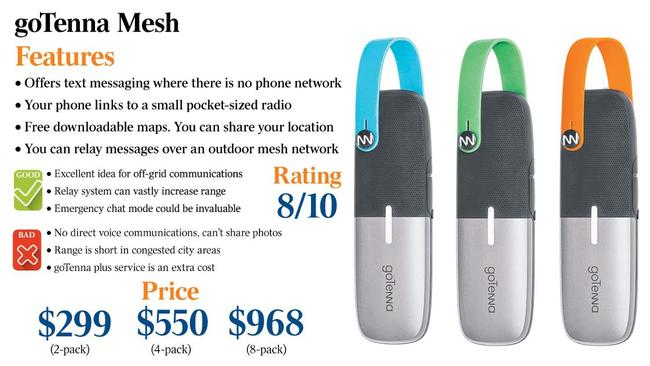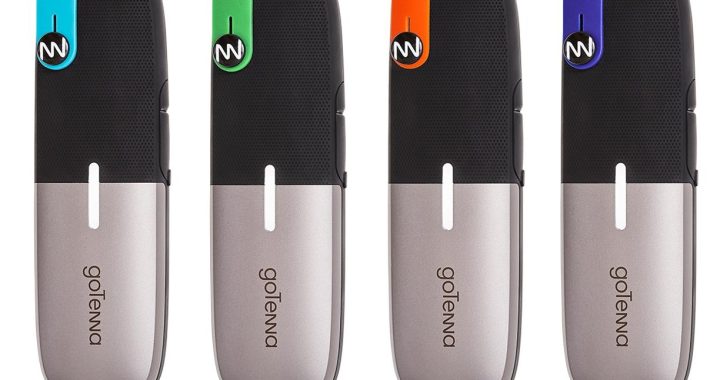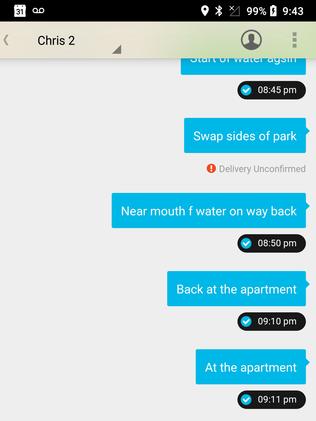goTenna’s brilliant idea to create an outdoor mesh network that supports off-grid text messaging over sizeable distances is in Australia. I visited goTenna at the Consumer Electronic Show in Las Vegas last month, and the company sparked my interest when it said goTenna Mesh had now been approved for use in Australia.
You could live on a remote farm where there’s no cellular network and you want to contact people working elsewhere on the property. You could live in a city black spot. You could be at a crowded conference where the cellular network and even Wi-Fi is overloaded and need to communicate with colleagues.
Or you could be travelling with friends overseas and out shopping and wanting to share a bargain you see, but you all don’t have local SIMS. You could be camping at a faraway beach or at a ski resort, and want your family and friends to stay connected.
With the goTenna Mesh system, each person carries around a small cigar-shaped radio unit that links to their smartphone by Bluetooth low energy. Units are lightweight and fit in your pocket. I found that the goTenna app made it straightforward to link the unit to the phone.
The app lets you chat with other users with goTenna Mesh units. You can chat one to one, have group chats with up to 10 people, and send broadcast messages called “shouts” to all goTenna Mesh users in the area. You can download free maps for off-grid use and share your location. I easily downloaded goTenna’s maps for Australia.

The goTenna Mesh units communicate via a 1 watt UHF radio. The company says the units are low powered enough to last a day on battery, but you can run them on mains power as well. It’s the fact that you can daisy chain several of these radio units and create a large network that sets them apart from handheld radios.
In the city, point-to-point range with goTenna Mesh is not so fantastic. In Sydney’s inner west, I got a range of 0.9km texting between my apartment balcony and the far end of Sydney Park, although goTenna cites up to 6km as more typical. The signal was strong enough to almost reach Bourke Road in Alexandria, about the same distance. goTenna says the range increases in open terrain. It claims a record of 16km point-to-point.
I tried an experiment where one goTenna Mesh was connected to another, which was set in relay mode with no linked phone. This relay unit was in range of another goTenna Mesh connected to a phone. This should automatically create a network with double the range.
There are lots of online posts suggesting the relay system does work, but unfortunately it didn’t work for me while testing.
[Update: I later got the relay unit working. The problem was that the radio was still set to US frequencies. The solution was to pair the unit with a local phone which prompted an automatic reset to Australian frequencies. It could then be switched back to being a stand-alone relay unit.]
This relay mode has lots of potential uses. On a cattle property, you could place units in sheds around the place to build a substantial network with double and triple the point-to-point range.
You can buy these units in packs of up to eight and put together a complex network. As with mesh systems generally, the network routes messages between these units the most efficient way it can find. Channel selection is automatic based on optimal communication.
goTenna says private messages are end-to-end encrypted with 384-bit public-private key ciphering. But public messages, shouts and pubic chats are not encrypted. Shouts, broadcast messages to whoever is around, are not relayed but emergency messages (accessed through settings in the app) are relayed. You get confirmation that your messages are received.
If you register your goTenna Mesh device in the app using your phone number, other goTenna Mesh users can find you using their regular contacts. Alternatively, the app will generate a goTenna ID for your phone for others to contact you.
goTenna says units can be set up to relay the traffic of any user in the area. I asked goTenna if this would compromise security. It assured me that relayed messages can only be read by the sender and the intended recipients.
You could call it a crowdsourced communications network. If two or three groups went to an outdoor music festival, all with goTenna Mesh systems each with some units in relay mode, you’d end up with a very strong mesh network.
You can leave relay units permanently plugged in so you don’t need to recharge them. The website imeshyou.com shows the location of relay nodes.
Once you buy the units, there is no ongoing cost. But there’s a premium service called goTenna Plus, $US9.99 ($12.35) first year, $US29.99 per year after that, which gives you access to rich terrain apps, an ability to automatically send your location to a trusted contact, trip statistics, and group delivery confirmation.
If you’re linking goTenna Mesh units to several phones, this subscription cost could be sizeable. You get away with one subscription however if you are using the same Apple and Google accounts across devices.
But I’d suggest the company should drop the premium service and incorporate its features as standard. That would make the basic system even more attractive to buy.
goTenna Plus’s best feature is the ability to send a message to another goTenna user who can relay it onto the internet. goTenna’s servers pick it up and on-send it as a regular SMS. So if just one of your group has a Wi-Fi connection, the rest can send regular text messages to the world. None of you need a SIM card. This worked OK for me. But it doesn’t work in reverse so you won’t get a reply.
I found that to receive messages, the goTenna app must be open or at least running in the background.
I asked goTenna why it hasn’t implemented voice calls. The company said voice calls were possible but they’re not planning for them. It said the mesh system had been optimised for maximum range for texting with the least amount of power while conforming to RF regulations. Voice support would make this more difficult. But goTenna Mesh would support recorded voice memos in the near future.
I noticed too that the chat capability doesn’t include sharing photos.
What about safety? Are you at risk carrying around these little goTennas in your pocket?
goTenna says the mesh transmits at lower power than your phone, so there’s no risk. Let’s hope they are right.
The units are weatherproof rather than waterproof. goTenna says you wouldn’t swim underwater with them, but they would survive being in the open during a heavy downpour. Units have different coloured straps so you can keep track of which unit is linked to which phone.
Overall, goTenna Mesh is an inventive approach to off-grid communications using intelligent mesh networking. The bottom-up approach of people power creating their own local texting networks should appeal to many.
goTenna Mesh
Price: $299 (2-pack), $550 (4-pack), $968 (8-pack)
Published in The Australian newspaper.


